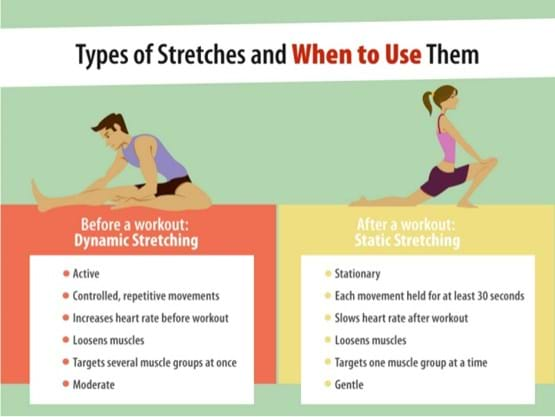Stretch Your Way to Better Health: Benefits and Examples of Stretching
Stretching is often overlooked as part of an exercise routine, but it can offer numerous benefits to the body. In this article, we'll discuss why stretching is important, when to stretch, and different types of stretches. We'll also provide some tips for safe and effective stretching.
The Benefits of Stretching
Stretching can reduce the risk of injury, improve flexibility and range of motion, and relieve muscle tension. There is a significant amount of research that supports the benefits of stretching. Here are a few examples:
Improved Flexibility: According to a study published in the Journal of Strength and Conditioning Research, regular stretching over a period of 12 weeks resulted in significant improvements in flexibility compared to a control group that did not stretch. This study suggests that stretching can be an effective way to improve overall flexibility and range of motion.
Reduced Risk of Injury: Another study published in the Clinical Journal of Sports Medicine found that incorporating a stretching routine into a warm-up routine reduced the risk of injury among athletes. The study found that athletes who performed static and dynamic stretching before physical activity experienced fewer muscle strains and sprains than those who did not stretch.
Improved
Athletic Performance: A review of multiple studies published in the Journal of
Sports Science and Medicine found that stretching can improve athletic
performance, particularly in activities that require flexibility and mobility.
The review found that stretching before physical activity can improve jumping ability,
running speed, and overall agility.
Reduced
Muscle Soreness: A study published in the Journal of Athletic Training found
that stretching after exercise can help reduce muscle soreness. The study found
that participants who stretched after a workout experienced less muscle
soreness than those who did not stretch.
Let's watch a video on the multiple benefits of stretching.
When to Stretch
Stretching
can be done before or after exercise, or even on its own as a separate
activity. Stretching before exercise can help warm up the muscles and prepare
them for activity, while stretching after exercise can help cool down the
muscles and prevent soreness.
Types of Stretches
There are
three main types of stretches: static, dynamic, and proprioceptive
neuromuscular facilitation (PNF). Each type of stretch serves a different
purpose and can be beneficial for different fitness goals.
Static stretches: Static stretches involve holding a position for a period of time. These stretches are best for improving overall flexibility, as they lengthen muscles and help increase range of motion. They can also help reduce muscle soreness and tension. Examples of static stretches include the hamstring stretch, quadriceps stretch, calf stretch, and shoulder stretch.
Dynamic stretches: Dynamic stretches involve moving the body through a range of motion. These stretches are best for improving mobility and preparing the body for physical activity. They can help increase blood flow to the muscles and improve overall physical performance. Examples of dynamic stretches include leg swings, walking lunges, arm circles, and high knees.
Proprioceptive neuromuscular facilitation (PNF) stretches: PNF stretches involve contracting and relaxing the muscle while stretching. These stretches are best for improving flexibility and range of motion. PNF stretches can be particularly effective for increasing flexibility in athletes and people with physical limitations. Examples of PNF stretches include the partner hamstring stretch, partner shoulder stretch, contract-relax hamstring stretch, and contract-relax shoulder stretch.
Tips for Safe and Effective Stretching
To stretch
safely and effectively, avoid bouncing or jerking movements, hold stretches for
at least 30 seconds, and breathe deeply. Don't push your body too far beyond
its limit, and stop if you feel pain. Remember that stretching alone cannot
prevent injury - it's important to incorporate a variety of exercises into your
routine to improve overall physical fitness.
Conclusion
Stretching may not be the most glamorous part of an exercise routine, but it's an essential component for maintaining a healthy body. By stretching regularly, you can reduce the risk of injury, improve flexibility, and relieve muscle tension. Try incorporating some of these stretches into your exercise routine and feel the benefits for yourself.






Comments
Post a Comment